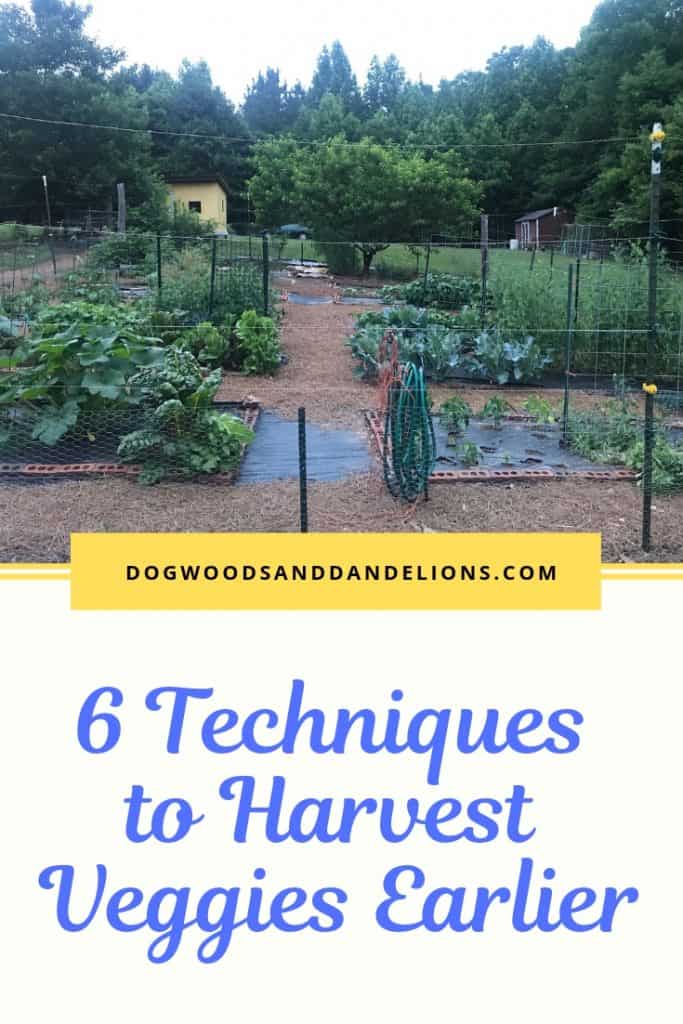6 Tips to Get Your Garden Started Earlier
With spring just around the corner, many of us are itching to get our hands in the dirt and grow something. Anything. With a few specialized tools and tricks, you can get your garden started even earlier so that you can harvest some of that delicious garden-fresh produce sooner.
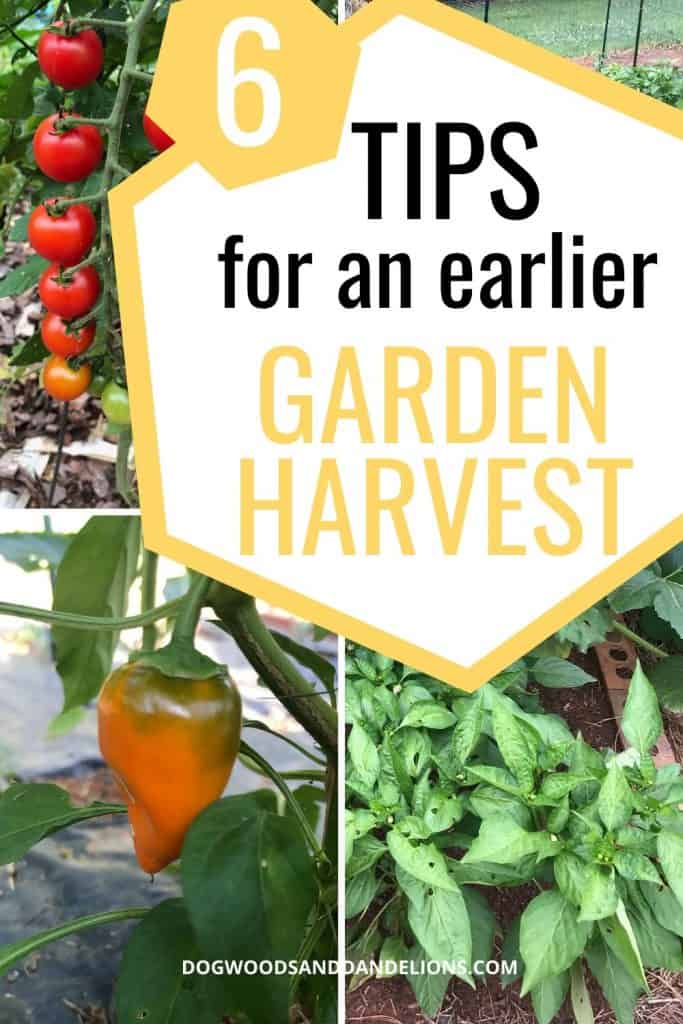
Affiliate Disclosure: Please note that some of the links in this article may be affiliate links and I may receive a small commission if you purchase something through a link. It will not change your cost. As an Amazon Associate, I earn from qualifying purchases. For more information, see my disclosures page.)
Grow in raised beds
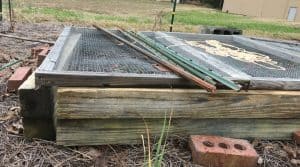
First, if you are planting a garden, trying growing your garden in raised beds. There are so many benefits to using raised beds that I wrote a whole post on it! But one big factor is that the soil warms up sooner in the spring. This allows you to get a head start on planting a few spring vegetables like peas, lettuce, or radishes.
Grow in your garden in black plastic
Another trick that helps the soil warm up sooner it to grow your garden in black plastic. The plastic has many benefits to your garden as it helps conserve moisture over the summer so you don’t have to water your garden as frequently. It also keeps the weeds from germinating so your garden is very low maintenance.
And you can put black plastic over your raised beds. These two tricks combined really warm the soil up quicker. If you need help deciding if growing a garden in black plastic is right for you, I’ve got a post that will help you make that decision.
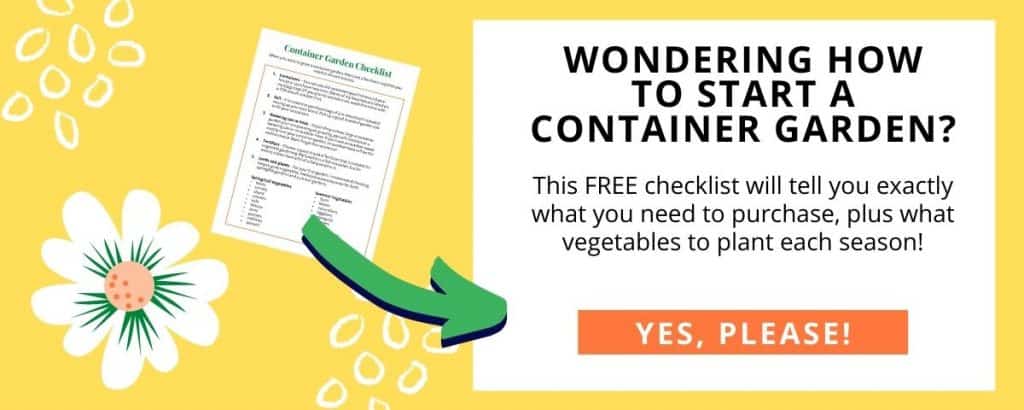
Wall-0-water or tomato teepees
For individual plants, especially tomatoes, a wall-o-water, also called a tomato teepee, is a great way to get them growing sooner. I’m not gonna lie, they can be a bit aggravating to set up, but my mother uses them every year and consistently harvests the first tomato of anyone I know.
A wall-o-water is a circular piece of plastic with tubes that hold water. Many other companies sell these under different names such as season starters or kozy coats. You plant your vegetable in the center of the circle and the wall-o-water keeps it from freezing.
The premise behind these is that once you fill the sleeves with water, the water absorbs sunlight during the day to heat the water. At night, the water releases the heat to keep the plant warm. One benefit to these, is that they are open at the top so you don’t have to remember to uncover them on a warm day. If you are expecting a particularly hard frost, you can throw a cover over the top if needed.
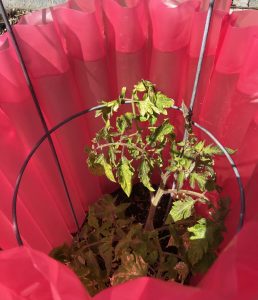
I recommend using the red for tomatoes, as the color red has been shown to reflect certain red shades of light back onto the plant. This is supposed to speed up fruit production and increase the yield. When installing my wall-o-waters, I put a tomato cage around the tomato, between the plant and these, in case they do try to collapse. Like I said earlier, they are a bit aggravating to use, but they really do work! Last year my Mom harvested her first tomato May 15 in our zone 7 garden.
These coupled with an early tomato variety and a special way of planting tomatoes (Read here for more info.) will help you to be the first in your neighborhood to harvest a tomato.
Wall-o-waters also come in a light blue color which is what I would use for most other summer crops such as peppers and eggplant.
Row covers
Row covers are great to extend your growing season. They allow you start plants sooner in the spring, and continue growing things later in the fall. My favorite brand is AgFabric and it comes in various weights. From lightweight 0.55 oz which is mainly used to keep bugs away to heavier 2.0 oz which is often called a frost blanket. Depending on where you live and how early you want to start gardening will depend on what thickness you buy.
This company also produces screen netting and shade fabric for garden use. I’m thinking of testing out the shade fabric this summer to see if I can keep harvesting my lettuce a bit longer.
You can easily turn row covers into mini hoop houses by purchasing hoops to support the fabric. You can make a sturdier option out of pvc pipe and some rebar stakes if you have a way to cut the pipe and rebar.
Row covers work great for lots of crops. They are about the only season starter that you can use for vegetables like peas and beans. But they are also suitable to grow lettuce earlier in the season and they are perfect for those times when a late frost threatens to ruin all your early vegetables.
Cloches
Cloches are basically any vessel that you can use to make a mini greenhouse. While you can purchase these, there are probably items around your house that you can use to make cloches.
Old milk jugs (preferably clear ones) or juice bottles make great mini-cloches to get your plants started sooner. You cut the bottom off the jug and place it over the plant. Remove the cap during the day. If you are expecting a freeze, replace the cap to help conserve the heat.
There are also many other items around your house that could be used as cloches, such as old bowls or even old glasses for small plants. However, for the best results, these should be clear so that the sunlight can penetrate the cloche. (So don’t use old stainless steel mixing bowls. ?) Sometimes the Dollar Tree has clear plastic bowls that would also work great, just be sure to place a brick or rock on top to hold them down in case it gets windy.
For more information on using cloches, this post from Savvy Gardening is full of great info.
Cold Frame
A cold frame works similar to cloche only it is bigger and covers more than one plant. Most cold frames have windows or plexi-glass that can be opened if it gets too hot.
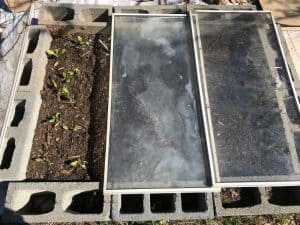
You can see a picture of my homemade cold frame above. I used old windows and cinder blocks that we had laying around the house to make mine. While not nearly as fancy as some, it gets the job done and allows me to harvest a few spring vegetables super early. I currently have lettuce and spinach in mine.
In Summary
By combining several of these tools and techniques, you should be able to get your garden started earlier and harvest vegetables sooner than before. I’ve used all these methods before at some time or other, so I can say that they do all work.
The one thing I highly recommend when using any of these techniques to get your garden started earlier, is to keep up with the forecasted temperatures. It can get too hot under any these season extenders during warm, sunny days and fry your plants if you aren’t careful. And you may need an extra layer of protection if the temperatures dip way below freezing.
For further reading on how to get your garden started earlier
These are a few of my favorite books that describe many other ways to help you get your garden started earlier.

The Winter Harvest Handbook by Eliot Coleman
In his book, The Winter Harvest Handbook, Eliot Coleman has developed a system of unheated greenhouses and row covers to grow cold-hardy crops all through his Maine winters. He sells his vegetables in various markets, so he really has the experience dealing with the cold weather.
This is a great book, however if this is your first year or two gardening, this isn’t the book I would recommend. His techniques are probably more advanced than most beginners want to learn when starting a garden. Instead, beginning gardeners who want to harvest produce year round should check out…
The Year-Round Vegetable Gardener by Niki Jabbour
The Year-Round Vegetable Gardener by Niki Jabbour explains easy methods to harvest produce all year. She lives in Novia Scotia which is in zone 5b. She explains how to stretch the growing season, and gives design tips on how to have a productive garden.
The book also explains how to grow the right crops at the right time. She explains how to build structures that are easy to assemble and that can help you extend your gardening season no matter where you live. The book also explains when to grow each vegetable for the most productive crop.
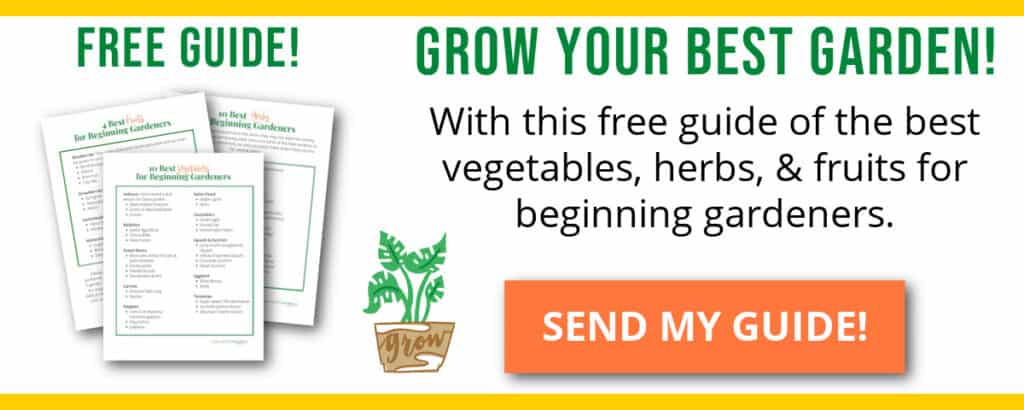
Gardening is a Gamble
Remember-Gardening is a gamble. Some years you’ll have great harvests. Some years won’t be so good. And some years, there will be vegetables that do great and others that just don’t produce. Some years the bugs will be everywhere. Some years will be too dry. Others may too rainy. That’s just how gardening is. (Check out my post on Why I Almost Quit Gardening for more information.)
Have fun gardening and just enjoy the process. Talk with other gardeners in your area to find the best varieties and the best times to plant. Don’t be afraid to experiment and try growing something new and different. And hopefully you’ll learn a few things along the way.
Have you ever used any season extenders to get started gardening earlier? If so, I would love to hear about your success and failures. Leave me a comment below and tell me what worked (and what didn’t.)
